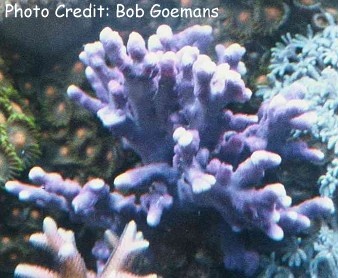
By Bob Goemans


Likely Reef Tank Suitable
Likely Fish-Only Tank Suitable
These corals fall into the Class: Hydrozoa and Order Anthoathecatra with few attracting aquarium hobbyists. Those in the Family Milleporidae, which only contains one genus, Millepora, are one of the few soft corals that build calcareous skeletons/contribute to reef building even thought they are ahermatypic corals. They have short, nematocyst-laden tentacles and these hair-like tentacles protrude from the skeleton and contain powerful toxins that can deliver a painful sting if touched! Ammonia or a meat tenderizer may help alleviate the burning if stung. I know, as I've been stung quite severely while diving near them when a wave swell forced me onto them!
Polyps are on the inside surface, as all are contained within a network of canals inside the skeleton. Small pores, leading to the polyps cover the outside surfaces.
As to those in the Family Stylasteridae, there are many genera and species. Some live in deep waters and are found in all oceans, and are also one of the few soft ahermatypic corals that build calcareous skeletons/contribute to reef building.
Mostly very colorful, and only two genera, Distichopora and Stylaster in the Family Stylasteridae have species that make it into the trade. Those in the Distichopora genus have lacy-looking, flat-bladed branches and generally develop small colonies. They are found in shaded areas, e.g., under reef overhangs and crevices, and usually areas high in nutrients. They do not sting or capture prey, as they are more dependant upon nutrient absorption.
Those in the Stylaster genus form long tapering tree-like branches, and their stinging tentacles are not as powerful as those on Millepora species, nevertheless, they do capture small prey, and also absorb nutrients from surrounding waters. In the wild they are found under overhangs, in caves, and always in shady locations.